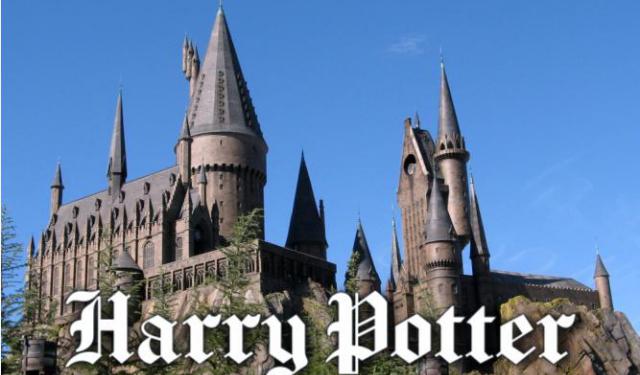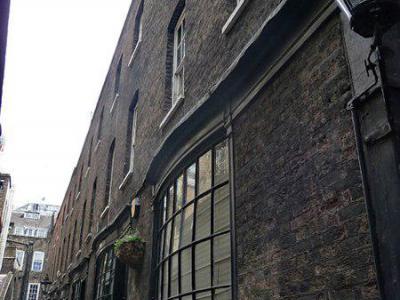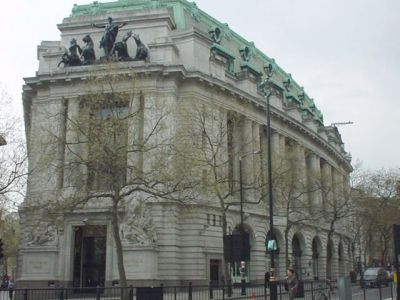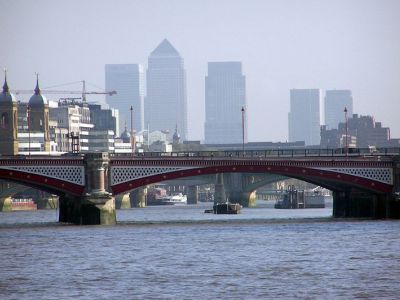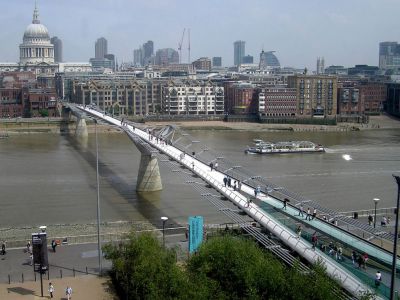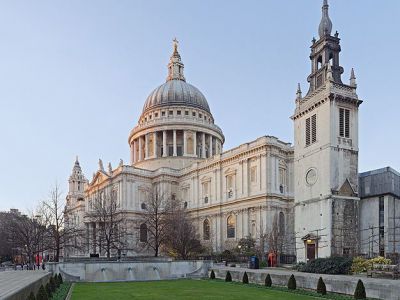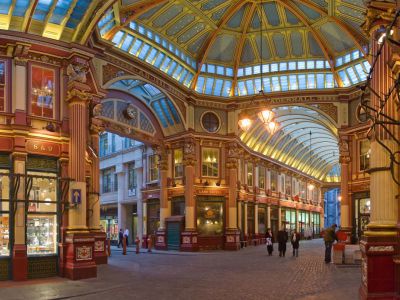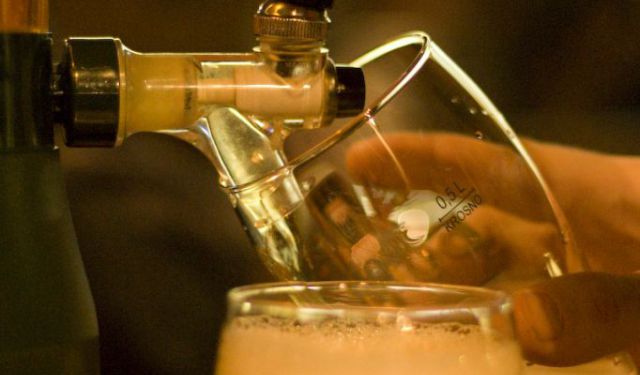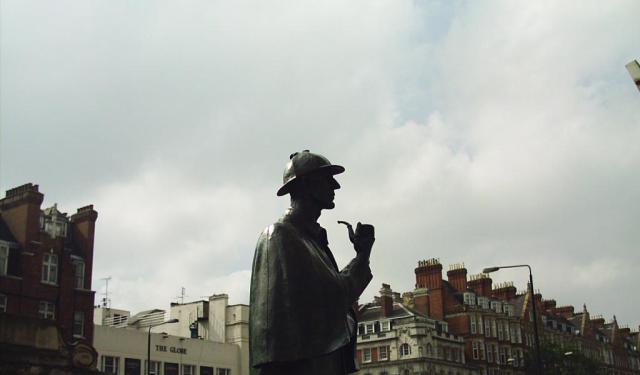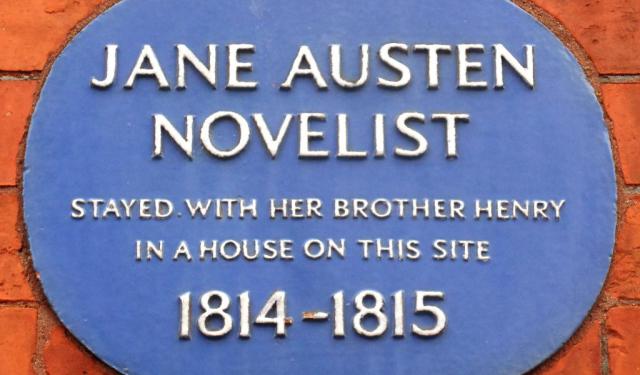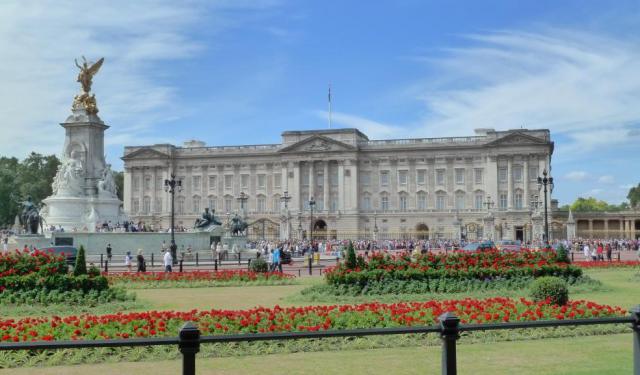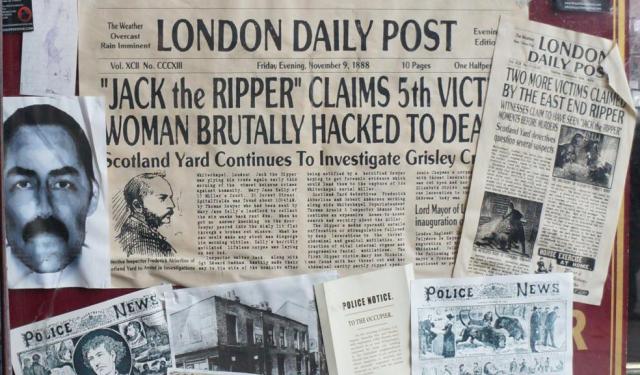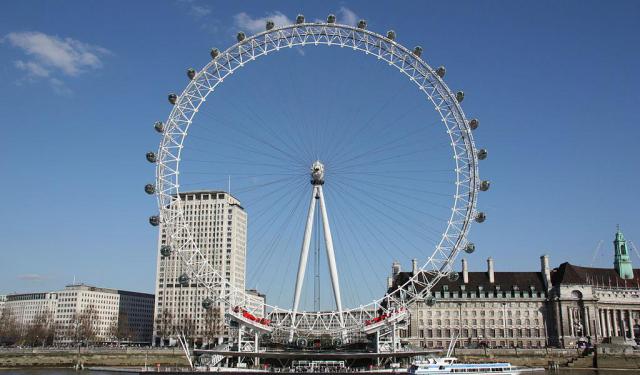Audio Guide: Harry Potter Walking Tour II (Self Guided), London
The Harry Potter movies and London go together like Butterbeer and a cold winter night at Hogsmeade. While much of the magical world was brought to life with computer-generated images and studio sets, quite a few iconic scenes were filmed right in the heart of the British capital, transforming ordinary city spots into wizarding landmarks. Here's a look at six more London locations where the Muggle world meets the magic of Harry Potter:
Goodwin’s Court, hidden off St. Martin’s Lane, looks like it was plucked straight from Diagon Alley. With its creaky windows and old gas lamps, it’s believed to have inspired Ollivanders and other magical storefronts, though it never officially appeared on screen. Still, the atmosphere oozes wand-shopping vibes.
Australia House, on the Strand, served as the luxurious interior of Gringotts Wizarding Bank in The Philosopher’s Stone. While the building is off-limits to the public, its glittering chandeliers and marble columns can be spotted in the film’s goblin-filled lobby.
Blackfriars Bridge makes a blink-and-you’ll-miss-it appearance in The Prisoner of Azkaban, during the chaotic Knight Bus ride through London. The scene may be brief, but it marks Harry’s thrilling introduction to magical transit.
Millennium Bridge gets a dramatic moment in The Half-Blood Prince, when Death Eaters tear through London, collapsing the pedestrian crossing into the Thames. The destruction was computer-generated images, but the real bridge-linking St. Paul’s Cathedral with the Tate Modern-has since become a fan-favorite photo spot.
St. Paul’s Cathedral itself has a subtle role in the franchise: its geometric staircase stands in as the path to Divination class in The Prisoner of Azkaban. A quick scene, but a striking one, adding a touch of sacred grandeur to Hogwarts’ magical halls.
Finally, Leadenhall Market plays host to the entrance of the Leaky Cauldron in The Philosopher’s Stone. The real-world location, 42 Bull’s Head Passage, marked the beginning of Harry’s first journey into the magical marketplace. Today, the ornate Victorian structure is still buzzing with tourists and office workers alike.
Altogether, London wasn’t just a backdrop for the Harry Potter movies but a character in its own right, providing the gritty realism, grandeur, and charm that helped transform real-world sites into spellbinding landmarks that continue to enchant fans today. If you're one such fan or just curious, this walking tour offers you all the same a unique chance to step off the page, out of the cinema, and into a journey through cinematic history filled with magical echoes.
Goodwin’s Court, hidden off St. Martin’s Lane, looks like it was plucked straight from Diagon Alley. With its creaky windows and old gas lamps, it’s believed to have inspired Ollivanders and other magical storefronts, though it never officially appeared on screen. Still, the atmosphere oozes wand-shopping vibes.
Australia House, on the Strand, served as the luxurious interior of Gringotts Wizarding Bank in The Philosopher’s Stone. While the building is off-limits to the public, its glittering chandeliers and marble columns can be spotted in the film’s goblin-filled lobby.
Blackfriars Bridge makes a blink-and-you’ll-miss-it appearance in The Prisoner of Azkaban, during the chaotic Knight Bus ride through London. The scene may be brief, but it marks Harry’s thrilling introduction to magical transit.
Millennium Bridge gets a dramatic moment in The Half-Blood Prince, when Death Eaters tear through London, collapsing the pedestrian crossing into the Thames. The destruction was computer-generated images, but the real bridge-linking St. Paul’s Cathedral with the Tate Modern-has since become a fan-favorite photo spot.
St. Paul’s Cathedral itself has a subtle role in the franchise: its geometric staircase stands in as the path to Divination class in The Prisoner of Azkaban. A quick scene, but a striking one, adding a touch of sacred grandeur to Hogwarts’ magical halls.
Finally, Leadenhall Market plays host to the entrance of the Leaky Cauldron in The Philosopher’s Stone. The real-world location, 42 Bull’s Head Passage, marked the beginning of Harry’s first journey into the magical marketplace. Today, the ornate Victorian structure is still buzzing with tourists and office workers alike.
Altogether, London wasn’t just a backdrop for the Harry Potter movies but a character in its own right, providing the gritty realism, grandeur, and charm that helped transform real-world sites into spellbinding landmarks that continue to enchant fans today. If you're one such fan or just curious, this walking tour offers you all the same a unique chance to step off the page, out of the cinema, and into a journey through cinematic history filled with magical echoes.
How it works: Download the app "GPSmyCity: Walks in 1K+ Cities" from Apple App Store or Google Play Store to your mobile phone or tablet. The app turns your mobile device into a personal tour guide and its built-in GPS navigation functions guide you from one tour stop to next. The app works offline, so no data plan is needed when traveling abroad.
Harry Potter Walking Tour II Map
Guide Name: Harry Potter Walking Tour II
Guide Location: England » London (See other walking tours in London)
Guide Type: Self-guided Walking Tour (Sightseeing)
# of Attractions: 6
Tour Duration: 2 Hour(s)
Travel Distance: 4.1 Km or 2.5 Miles
Author: felicity
Sight(s) Featured in This Guide:
Guide Location: England » London (See other walking tours in London)
Guide Type: Self-guided Walking Tour (Sightseeing)
# of Attractions: 6
Tour Duration: 2 Hour(s)
Travel Distance: 4.1 Km or 2.5 Miles
Author: felicity
Sight(s) Featured in This Guide:
- Goodwin’s Court
- Australia House
- Blackfriars Bridge
- Millennium Bridge
- St. Paul's Cathedral
- Leadenhall Market
1) Goodwin’s Court
Imagine you're wandering through London's Covent Garden, dodging selfie sticks and street performers, when suddenly-bam!-you stumble upon a time portal disguised as an alleyway. Welcome to Goodwin’s Court: dark, narrow, and delightfully mysterious, like London’s best-kept secret and possibly its spookiest shortcut.
Tucked behind the unassuming facade of The Theatre Goers Club of Great Britain-and just a wand-flick away from Charing Cross Road and Cecil Court-this sliver of Georgian charm has been haunting the city since around 1627. Amid those glossy black doors with gleaming knockers, brass nameplates that whisper of bygone businesses, and bow-fronted windows that curve so gracefully, you’d swear they were sketched by a Georgian architect with a flair for drama.
Now, Harry Potter fans-prepare your gasps. Goodwin’s Court didn’t make it to the big screen, but it might as well have. Its moody vibes, authentic old-school lanterns, and shadowy elegance evoke a sense of (and inspired the props created by Warner Bros. for) its creepy evil cinematographic twin, Knockturn Alley. Depending on the weather and lighting-and London’s got options-it can feel equal parts Diagon and doom.
Sure, you won’t find a wand shop or a dodgy apothecary tucked behind those windows here. But the eerie resemblance to the set designs in the films is so uncanny, it might just send shivers down your spine, prompting you to start checking over your shoulder for Death Eaters. Bellatrix Lestrange-is that you, darling?-or is it Lucius Malfoy apparating in the dead of night!?
So brace yourself for this detour. After all, Goodwin’s Court isn’t just a street-it’s a stroll through magical déjà vu...
Tucked behind the unassuming facade of The Theatre Goers Club of Great Britain-and just a wand-flick away from Charing Cross Road and Cecil Court-this sliver of Georgian charm has been haunting the city since around 1627. Amid those glossy black doors with gleaming knockers, brass nameplates that whisper of bygone businesses, and bow-fronted windows that curve so gracefully, you’d swear they were sketched by a Georgian architect with a flair for drama.
Now, Harry Potter fans-prepare your gasps. Goodwin’s Court didn’t make it to the big screen, but it might as well have. Its moody vibes, authentic old-school lanterns, and shadowy elegance evoke a sense of (and inspired the props created by Warner Bros. for) its creepy evil cinematographic twin, Knockturn Alley. Depending on the weather and lighting-and London’s got options-it can feel equal parts Diagon and doom.
Sure, you won’t find a wand shop or a dodgy apothecary tucked behind those windows here. But the eerie resemblance to the set designs in the films is so uncanny, it might just send shivers down your spine, prompting you to start checking over your shoulder for Death Eaters. Bellatrix Lestrange-is that you, darling?-or is it Lucius Malfoy apparating in the dead of night!?
So brace yourself for this detour. After all, Goodwin’s Court isn’t just a street-it’s a stroll through magical déjà vu...
2) Australia House
Just past Bush House-once the voice of the BBC’s World Service echoing across the globe-you’ll stumble upon a rather unassuming corner of London... unless you’re a wizard. Welcome to Australia House, the stately headquarters of the Australian High Commission (essentially, an embassy for Australia within the British Commonwealth). It opened in 1918, with King George V himself cutting the metaphorical ribbon. But let’s be real-if you’re a Harry Potter fan, you’re not here for visa info.
You’re here for Gringotts.
Yes, the goblin-owned-and-run, no-nonsense wizarding bank-famously known, according to Rubeus Hagrid, as the second safest place in the magical world (after Hogwarts, of course)-was filmed right here. The bank appeared in "Harry Potter and the Philosopher's Stone" and "Harry Potter and the Deathly Hallows – Part 2." Remember that jaw-dropping marble lobby with glinting colossal glass chandeliers and goblin scowls? Straight from Australia House’s Beaux Arts interior. The filmmakers loved it so much that they recreated it later at Leavesden Studios. But those first shots were pure embassy magic.
Now, don’t expect to just stroll in waving a wand and shouting "Alohomora." Australia House is still a working embassy. You need a proper reason-something like a visa application or an official appointment-to get through those doors. But if you're charming (and not just in the magical sense), the security might let you peek at the grand chandeliered hall where the wizarding world's economy once jingled. Bear in mind, though, that Australia House is only open on weekdays, so if you visit on a weekend or public holiday, you won't be able to view the interior.
Tip:
It’s perched at a traffic-heavy junction, so even if you don’t get inside, you’ll be treated to a surprisingly hypnotic display of London traffic choreography. Just don’t try to ride a dragon through it. That’s been done.
You’re here for Gringotts.
Yes, the goblin-owned-and-run, no-nonsense wizarding bank-famously known, according to Rubeus Hagrid, as the second safest place in the magical world (after Hogwarts, of course)-was filmed right here. The bank appeared in "Harry Potter and the Philosopher's Stone" and "Harry Potter and the Deathly Hallows – Part 2." Remember that jaw-dropping marble lobby with glinting colossal glass chandeliers and goblin scowls? Straight from Australia House’s Beaux Arts interior. The filmmakers loved it so much that they recreated it later at Leavesden Studios. But those first shots were pure embassy magic.
Now, don’t expect to just stroll in waving a wand and shouting "Alohomora." Australia House is still a working embassy. You need a proper reason-something like a visa application or an official appointment-to get through those doors. But if you're charming (and not just in the magical sense), the security might let you peek at the grand chandeliered hall where the wizarding world's economy once jingled. Bear in mind, though, that Australia House is only open on weekdays, so if you visit on a weekend or public holiday, you won't be able to view the interior.
Tip:
It’s perched at a traffic-heavy junction, so even if you don’t get inside, you’ll be treated to a surprisingly hypnotic display of London traffic choreography. Just don’t try to ride a dragon through it. That’s been done.
3) Blackfriars Bridge
Blackfriars Bridge is tangible proof that even bridges in London have dramatic backstories and excellent taste in accessories.
The original structure made its debut in 1769, the brainchild of 26-year-old architectural prodigy Robert Mylne. He had just returned from Rome, full of Renaissance dreams and Piranesi prints, and decided to channel them into nine graceful, semi-elliptical arches of Portland stone. A scenic marvel with St. Paul’s Cathedral looming nobly in the background, it was so picturesque that 18th-century painters couldn’t resist putting it on canvas. One of the best-known results is William Marlow’s romantic rendering of Saint Paul’s from the South Bank. Very moody. Very oil-paint-on-canvas energy.
But alas, arches don’t last forever, especially when river water gets feisty. By 1869, Queen Victoria cut the ribbon on the new-and-improved Blackfriars Road Bridge, almost exactly a century after its predecessor was inaugurated. This time, engineers ditched the stone and went full steam ahead with five elliptical wrought-iron arches, designed not to upset the Thames or its boat traffic. The bridge’s granite piers, styled like medieval pulpits, are a nod to the 13th-century Dominican friary that gave the area its name. (No, not a brand of gin, though that would've been fun.) As for the color scheme, it's red, white, gold, and plenty of royal drama.
Look closely and you’ll spot seabirds on the east side, freshwater birds on the west, and a very stoic silver dragon guarding the entrance to the City of London like a mythical customs officer.
By 1910, the bridge had to bulk up-hello, trams and London’s ever-growing swarm of vehicles. Today, it spans a beefy 105 feet (or 32 meters), making it the widest bridge over the Thames. That’s right: a true heavyweight champion of river crossings.
More recently (in 2007), Blackfriars Bridge had its own moment of magic for Potterheads, soaring onto the silver screen in Harry Potter and the Order of the Phoenix, when the Order whisked Harry away from Privet Drive to Grimmauld Place. Look closely, and you’ll catch them flying under the Blackfriars, capes flapping and all that. Muggles didn’t even blink.
Tip:
Wander into the southern pedestrian subway and you’ll still see Mylne’s original bridge, lovingly preserved in tile. Because even demolished bridges deserve a good portrait.
The original structure made its debut in 1769, the brainchild of 26-year-old architectural prodigy Robert Mylne. He had just returned from Rome, full of Renaissance dreams and Piranesi prints, and decided to channel them into nine graceful, semi-elliptical arches of Portland stone. A scenic marvel with St. Paul’s Cathedral looming nobly in the background, it was so picturesque that 18th-century painters couldn’t resist putting it on canvas. One of the best-known results is William Marlow’s romantic rendering of Saint Paul’s from the South Bank. Very moody. Very oil-paint-on-canvas energy.
But alas, arches don’t last forever, especially when river water gets feisty. By 1869, Queen Victoria cut the ribbon on the new-and-improved Blackfriars Road Bridge, almost exactly a century after its predecessor was inaugurated. This time, engineers ditched the stone and went full steam ahead with five elliptical wrought-iron arches, designed not to upset the Thames or its boat traffic. The bridge’s granite piers, styled like medieval pulpits, are a nod to the 13th-century Dominican friary that gave the area its name. (No, not a brand of gin, though that would've been fun.) As for the color scheme, it's red, white, gold, and plenty of royal drama.
Look closely and you’ll spot seabirds on the east side, freshwater birds on the west, and a very stoic silver dragon guarding the entrance to the City of London like a mythical customs officer.
By 1910, the bridge had to bulk up-hello, trams and London’s ever-growing swarm of vehicles. Today, it spans a beefy 105 feet (or 32 meters), making it the widest bridge over the Thames. That’s right: a true heavyweight champion of river crossings.
More recently (in 2007), Blackfriars Bridge had its own moment of magic for Potterheads, soaring onto the silver screen in Harry Potter and the Order of the Phoenix, when the Order whisked Harry away from Privet Drive to Grimmauld Place. Look closely, and you’ll catch them flying under the Blackfriars, capes flapping and all that. Muggles didn’t even blink.
Tip:
Wander into the southern pedestrian subway and you’ll still see Mylne’s original bridge, lovingly preserved in tile. Because even demolished bridges deserve a good portrait.
4) Millennium Bridge
The Millennium Bridge-London’s bold leap into the 21st century, and quite literally, a wobbly one.
This sleek steel span holds not one, not two, but three distinctions. First, it’s the youngest of the Thames crossings. Second, it’s the only bridge in London where cars are banished-only pedestrians, photographers, and the occasional rollerblader. And third? It set a record for the fastest closure in UK bridge history. Opened with great fanfare... then swiftly shut down just two days later because, well, it couldn’t handle people's excitement. Or their footsteps...
Designed to mark the year 2000, the bridge was formally inaugurated by Queen Elizabeth II as the winning brainchild of Foster & Partners and Ove Arup & Partners-those clever folks you call when you want something to be both futuristic and structurally sound. Stretching 325 meters (or 1060+ feet), it tiptoes across the Thames with eight low-slung suspension cables (tensioned to exert a formidable 2000-ton force against the sturdy piers rooted on each bank) that don’t dare obstruct your Insta-worthy shot of St. Paul’s Cathedral.
Indeed, as a pedestrian-only portal between the Tate Modern and Shakespeare’s Globe on one end, and the mighty dome of St. Paul’s on the other, the views it affords are truly a chef’s kiss.
Of course, its opening-day wobble-thanks to 90,000 enthusiastic pedestrians striding in unintentional unison-earned it the affectionate moniker “The Wobbly Bridge.” But fear not: engineers came to the rescue with over 50 high-tech dampers and stabilizers galore, and by 2002, the bridge was back in action, shimmy-free.
Speaking of dramatic comebacks-yes, that was the very bridge you saw disintegrating in Harry Potter and the Half-Blood Prince. Death Eaters swoop in, chaos erupts, and the Millennium Bridge bends like a paperclip. Don’t worry, though-it was all movie magic. The real bridge stood firm and survived the scene unscathed, unlike its fictional counterpart.
Tip:
Wear good walking shoes, bring a raincoat (because it's London), and don’t forget to glance down-sometimes there are funky little art stickers underfoot. Because, again, this is London, and even the pavement might be making a statement.
This sleek steel span holds not one, not two, but three distinctions. First, it’s the youngest of the Thames crossings. Second, it’s the only bridge in London where cars are banished-only pedestrians, photographers, and the occasional rollerblader. And third? It set a record for the fastest closure in UK bridge history. Opened with great fanfare... then swiftly shut down just two days later because, well, it couldn’t handle people's excitement. Or their footsteps...
Designed to mark the year 2000, the bridge was formally inaugurated by Queen Elizabeth II as the winning brainchild of Foster & Partners and Ove Arup & Partners-those clever folks you call when you want something to be both futuristic and structurally sound. Stretching 325 meters (or 1060+ feet), it tiptoes across the Thames with eight low-slung suspension cables (tensioned to exert a formidable 2000-ton force against the sturdy piers rooted on each bank) that don’t dare obstruct your Insta-worthy shot of St. Paul’s Cathedral.
Indeed, as a pedestrian-only portal between the Tate Modern and Shakespeare’s Globe on one end, and the mighty dome of St. Paul’s on the other, the views it affords are truly a chef’s kiss.
Of course, its opening-day wobble-thanks to 90,000 enthusiastic pedestrians striding in unintentional unison-earned it the affectionate moniker “The Wobbly Bridge.” But fear not: engineers came to the rescue with over 50 high-tech dampers and stabilizers galore, and by 2002, the bridge was back in action, shimmy-free.
Speaking of dramatic comebacks-yes, that was the very bridge you saw disintegrating in Harry Potter and the Half-Blood Prince. Death Eaters swoop in, chaos erupts, and the Millennium Bridge bends like a paperclip. Don’t worry, though-it was all movie magic. The real bridge stood firm and survived the scene unscathed, unlike its fictional counterpart.
Tip:
Wear good walking shoes, bring a raincoat (because it's London), and don’t forget to glance down-sometimes there are funky little art stickers underfoot. Because, again, this is London, and even the pavement might be making a statement.
5) St. Paul's Cathedral (must see)
For centuries, Saint Paul's Cathedral has stood tall, quite literally, as London’s ultimate comeback story in stone form. After the Great Fire of 1666 turned the medieval cathedral (originally founded in 1087) into a smoldering memory, Sir Christopher Wren got the challenge of designing the masterpiece we see today.
Construction began in 1675 and took 35 years. Wren’s first design was too modern. The second-too modern again and too Catholic-looking. He eventually struck a deal with the Anglican clergy: throw in a classic English spire, but sneak in a magnificent triple-stacked dome instead. Now it’s the second-largest cathedral dome in the world after St. Peter’s in Rome. Subtle flex.
During WWII and the Blitz, flames again came for the cathedral, and again, it stood its ground. Brave volunteers fought fires on the dome, saving it from complete destruction. Saint Paul’s became a beacon of hope in the rubble. Fittingly, above the south entrance, you’ll spot the Latin word "Resurgam," meaning “I shall rise again.” Very on brand.
Inside, the cathedral is pure English Baroque drama. Climb 257 steps to the Whispering Gallery, where even your gossip echoes in style. Add another 119 steps for the Stone Gallery and 152 more for the Golden Gallery-because apparently, stairs build character. But the panoramic views of London are worth every calf cramp.
Down below in the crypt, you’ll find the final resting places of national legends: the Duke of Wellington, Admiral Nelson, and of course, Wren himself. His epitaph reads: “If you seek his monument, look around you.”
Saint Paul’s was basically Dickens' favorite rooftop. In Master Humphrey’s Clock, he climbs to the top for a bird’s eye view of life’s contradictions, which, come to think of it, London is full of. In David Copperfield, Peggotty enjoys the view too. Dickens knew this neighborhood well and even attended the Duke of Wellington’s funeral here in 1852.
Back in Shakespeare’s day, the area around Saint Paul’s was bustling with booksellers. This was the epicenter of the English publishing world- the Bard’s plays were printed and sold right here. Odds are he browsed the stalls himself, possibly muttering, “To plagiarize, or not to plagiarize...”
And for the modern-day wizarding crowd: yes, that staircase you recognize from Harry Potter and the Prisoner of Azkaban is real. The magical-looking Geometric Staircase-aka the Dean’s Stair-floats elegantly in the cathedral’s South West Bell Tower. You might remember it from Professor Trelawney’s Divination class or The Goblet of Fire. You’ll need a ticket to see it, but for Potterheads, it’s practically a rite of passage.
Tip:
Book online to skip the queue. And maybe spring for the audio tour-unless you’ve got me in your ear, of course.
Construction began in 1675 and took 35 years. Wren’s first design was too modern. The second-too modern again and too Catholic-looking. He eventually struck a deal with the Anglican clergy: throw in a classic English spire, but sneak in a magnificent triple-stacked dome instead. Now it’s the second-largest cathedral dome in the world after St. Peter’s in Rome. Subtle flex.
During WWII and the Blitz, flames again came for the cathedral, and again, it stood its ground. Brave volunteers fought fires on the dome, saving it from complete destruction. Saint Paul’s became a beacon of hope in the rubble. Fittingly, above the south entrance, you’ll spot the Latin word "Resurgam," meaning “I shall rise again.” Very on brand.
Inside, the cathedral is pure English Baroque drama. Climb 257 steps to the Whispering Gallery, where even your gossip echoes in style. Add another 119 steps for the Stone Gallery and 152 more for the Golden Gallery-because apparently, stairs build character. But the panoramic views of London are worth every calf cramp.
Down below in the crypt, you’ll find the final resting places of national legends: the Duke of Wellington, Admiral Nelson, and of course, Wren himself. His epitaph reads: “If you seek his monument, look around you.”
Saint Paul’s was basically Dickens' favorite rooftop. In Master Humphrey’s Clock, he climbs to the top for a bird’s eye view of life’s contradictions, which, come to think of it, London is full of. In David Copperfield, Peggotty enjoys the view too. Dickens knew this neighborhood well and even attended the Duke of Wellington’s funeral here in 1852.
Back in Shakespeare’s day, the area around Saint Paul’s was bustling with booksellers. This was the epicenter of the English publishing world- the Bard’s plays were printed and sold right here. Odds are he browsed the stalls himself, possibly muttering, “To plagiarize, or not to plagiarize...”
And for the modern-day wizarding crowd: yes, that staircase you recognize from Harry Potter and the Prisoner of Azkaban is real. The magical-looking Geometric Staircase-aka the Dean’s Stair-floats elegantly in the cathedral’s South West Bell Tower. You might remember it from Professor Trelawney’s Divination class or The Goblet of Fire. You’ll need a ticket to see it, but for Potterheads, it’s practically a rite of passage.
Tip:
Book online to skip the queue. And maybe spring for the audio tour-unless you’ve got me in your ear, of course.
6) Leadenhall Market
The origins of Leadenhall Market date back to the 14th century. Its name is a nod to the lead roof that once covered the medieval market hall. The location itself marks the former site of an ancient Roman forum and basilica from the days of Londinium, thus making it steeped in over two millennia of history.
The current building, a stunning example of Victorian architecture, with its distinctive glass canopy, wrought iron details, decorative arches, and intricate detailing, was redesigned in 1881 by Sir Horace Jones, the very same architect who gave us Tower Bridge.
Once the go-to place for meat, poultry, and game, Leadenhall now leans more toward wine bars, boutiques, and bistro bites, though you’ll still spot original iron meat hooks (if you look up) and even a traditional shoeshine station. Stroll its cobbled paths and you’ll find city suits mingling with selfie-takers, all basking in that golden Victorian glow. In this 21st-century era of towering skyscrapers, it survives solely due to government protection.
In recent years, Leadenhall has been a major pop culture draw for its connection to the Harry Potter movies. The surreal contrast between its ancient charm and the surrounding towers of steel is thought to have inspired J.K. Rowling’s vision for Diagon Alley- a romantic slice of London’s past, nestled right under the glassy gaze of corporate high-risers.
In particular, the market served as the filming location for parts of Harry Potter and the Philosopher’s Stone and The Goblet of Fire, specifically as the entrance to Diagon Alley. At 42 Bull's Head Passage, a humble blue doorway is easily recognizable as that leading to the Leaky Cauldron pub (in the movies). Today, the shop is home to Glass House Opticians, so you might even chance upon Mad-Eye Moody here, getting fitted for a contact lens with a bit of luck...
Indeed, whether you’re here for the history, the architecture, a cheeky pint, or just to whisper “Alohomora” at random doors, Leadenhall Market delivers all the same. It's London-layered, lively, and just a little bit enchanted.
The current building, a stunning example of Victorian architecture, with its distinctive glass canopy, wrought iron details, decorative arches, and intricate detailing, was redesigned in 1881 by Sir Horace Jones, the very same architect who gave us Tower Bridge.
Once the go-to place for meat, poultry, and game, Leadenhall now leans more toward wine bars, boutiques, and bistro bites, though you’ll still spot original iron meat hooks (if you look up) and even a traditional shoeshine station. Stroll its cobbled paths and you’ll find city suits mingling with selfie-takers, all basking in that golden Victorian glow. In this 21st-century era of towering skyscrapers, it survives solely due to government protection.
In recent years, Leadenhall has been a major pop culture draw for its connection to the Harry Potter movies. The surreal contrast between its ancient charm and the surrounding towers of steel is thought to have inspired J.K. Rowling’s vision for Diagon Alley- a romantic slice of London’s past, nestled right under the glassy gaze of corporate high-risers.
In particular, the market served as the filming location for parts of Harry Potter and the Philosopher’s Stone and The Goblet of Fire, specifically as the entrance to Diagon Alley. At 42 Bull's Head Passage, a humble blue doorway is easily recognizable as that leading to the Leaky Cauldron pub (in the movies). Today, the shop is home to Glass House Opticians, so you might even chance upon Mad-Eye Moody here, getting fitted for a contact lens with a bit of luck...
Indeed, whether you’re here for the history, the architecture, a cheeky pint, or just to whisper “Alohomora” at random doors, Leadenhall Market delivers all the same. It's London-layered, lively, and just a little bit enchanted.
Walking Tours in London, England
Create Your Own Walk in London
Creating your own self-guided walk in London is easy and fun. Choose the city attractions that you want to see and a walk route map will be created just for you. You can even set your hotel as the start point of the walk.
London's Historic Pubs Walk
If there’s any more iconic symbol for London than Big Ben or the London Eye, then it must be the traditional English pub. And London sure is full of them, dating from pre-Victorian times to just about five minutes ago.
With so much history surrounding London there is no shortage of historic pubs to choose from. Whether you fancy half-timbered, rambling watering holes or small but perfectly... view more
Tour Duration: 3 Hour(s)
Travel Distance: 5.6 Km or 3.5 Miles
With so much history surrounding London there is no shortage of historic pubs to choose from. Whether you fancy half-timbered, rambling watering holes or small but perfectly... view more
Tour Duration: 3 Hour(s)
Travel Distance: 5.6 Km or 3.5 Miles
Sherlock Holmes Tour in London
Among a myriad of other, real-life celebrities who have ever called London their home, perhaps the most famous is the fictional consulting detective, Sherlock Holmes, created by Conan Doyle. Indeed, the ingenious sleuth has left an indelible mark on the literary and cultural landscape of London ever since the appearance of the first stories about him in the late 1880s. Years on, there are several... view more
Tour Duration: 1 Hour(s)
Travel Distance: 2.3 Km or 1.4 Miles
Tour Duration: 1 Hour(s)
Travel Distance: 2.3 Km or 1.4 Miles
Jane Austen’s London
The celebrated English novelist Jane Austen primarily lived between Bath and Hampshire. However, London also held a special significance in Austen's life. Many of her novels drew inspiration from the capital, like Lydia Bennet and Mr Wickham’s elopement in “Pride & Prejudice.”
One of Austen's cherished spots in London was Twinings, a renowned tea shop. Jane Austen was known... view more
Tour Duration: 2 Hour(s)
Travel Distance: 4.4 Km or 2.7 Miles
One of Austen's cherished spots in London was Twinings, a renowned tea shop. Jane Austen was known... view more
Tour Duration: 2 Hour(s)
Travel Distance: 4.4 Km or 2.7 Miles
Walk around Buckingham Palace
Buckingham Palace, the British monarch's official residence, is a must-see for anyone visiting London, but so are the adjacent royal establishments that give a unique window into the royal way of life. On this self-guided walking tour, along with Buckingham Palace and its memorable fountain, you will visit the St. James's private royal residence, the wonderful Queen's Gallery, and... view more
Tour Duration: 1 Hour(s)
Travel Distance: 2.3 Km or 1.4 Miles
Tour Duration: 1 Hour(s)
Travel Distance: 2.3 Km or 1.4 Miles
Jack the Ripper Walking Tour
Jack the Ripper, an unidentified serial killer who terrorized the British capital in 1888, became notorious for the series of brutal and gruesome murders that he carried out in the East End of London. The primary setting for the Jack the Ripper attacks was Whitechapel, at the time a poverty-stricken and crime-ridden district, known for its dark alleys and narrow streets.
The name "Jack the... view more
Tour Duration: 2 Hour(s)
Travel Distance: 4.0 Km or 2.5 Miles
The name "Jack the... view more
Tour Duration: 2 Hour(s)
Travel Distance: 4.0 Km or 2.5 Miles
South Bank Walking Tour
London’s South Bank, stretching along the southern side of the River Thames, roughly between Westminster Bridge and Tower Bridge, is one of the most interesting and liveliest parts of the British capital. Here, London’s old soul and modern edge shake hands... and then probably go grab a pint together. Famous for its arts, culture, food, and scenic riverside walks, the area has a long and... view more
Tour Duration: 3 Hour(s)
Travel Distance: 4.8 Km or 3 Miles
Tour Duration: 3 Hour(s)
Travel Distance: 4.8 Km or 3 Miles
Useful Travel Guides for Planning Your Trip
London Souvenirs: 18 Distinctively British Products for Travelers
Most visitors to London consider shopping as part of their must-do London experience. From street markets to Victorian arcades to snobbish Sloane Square to busy Oxford Street, there are a host of shops selling items which typically represent this vibrant city. Whether you are shopping for souvenirs...
The Most Popular Cities
/ view all
